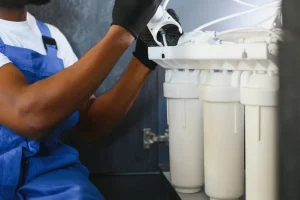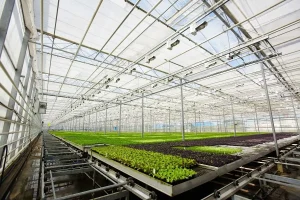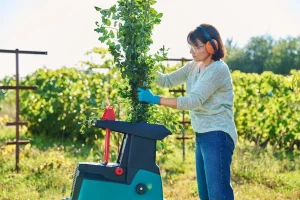The question of how automatic irrigation systems work is frequently asked for efficient irrigation. Therefore, the basic logic of the system must be understood correctly. Furthermore, these systems work at certain intervals with the help of a timer. In this way, irrigation takes place without manual intervention. The moisture requirement of the soil is measured by sensors and the system is triggered. In this case, water is provided only when necessary. In addition, the amount of water can be adjusted according to the type of plant. This saves water and protects plant health. Drip irrigation or sprinkler systems can be integrated into the automation. Therefore, it can be applied to various agricultural areas. Additionally, systems are manageable via mobile apps, increasing user control. Water tank, pump, and valve units operate together, ensuring balanced water flow.
Table of Contents
- Automatic Irrigation Systems
- Automatic Irrigation System Components
- Automatic Field Irrigation Systems
- Automated Command Irrigation Systems
- Smart Water Control Technologies
- Conclusion
- Frequently Asked Questions
Automatic Irrigation Systems
Automatic irrigation systems are frequently preferred in modern agriculture and landscaping applications. Therefore, they contribute to the healthy growth of plants while saving water. It also saves time by eliminating the need for manual watering. In this way, irrigation takes place at pre-programmed times. Thanks to soil moisture sensors, the water requirement is accurately determined.Only the needed amount of water is supplied. Timer and valve units work together, ensuring controlled flow. Automatic irrigation systems can be integrated with different irrigation methods. Therefore, they can be easily applied in drip irrigation and sprinkler systems. In addition, the systems can also be supported by solar energy. In this way, energy costs can be reduced. Remote control can be provided with mobile applications.

Automatic Irrigation System Components
The components of an automatic irrigation system work together to make the system work efficiently. Therefore, the correct selection of each part is of great importance. Furthermore, the timer controls the work as the brain of the system. This way, watering starts and ends automatically at certain times. The valve opens and closes the flow of water. In this case, unnecessary water use is avoided. In addition, a pump is used to equalize the pressure from the water supply. This way, irrigation reaches all areas evenly. The filter cleans the water in the system and prevents blockages. Therefore, regular maintenance is necessary. In addition, moisture sensors measure the soil’s need for water. In this case, only the necessary irrigation is provided. Drip irrigation pipes deliver water directly to the root zone. In this way, water loss is minimized.

Automatic Field Irrigation Systems
Automatic field irrigation systems have been developed to increase productivity in modern agriculture. Therefore, they significantly reduce the labor requirements of farmers. It also reduces costs by saving water. In this way, it contributes to sustainable agricultural practices. The systems are usually integrated into drip and sprinkler methods. In this case, they offer solutions suitable for different plant species. Furthermore, soil moisture is measured regularly thanks to sensors. In this way, only the needed areas are irrigated. Timers automatically start irrigation at specific times. Therefore, the risk of human error is eliminated. Furthermore, the systems can also work with solar-powered pumps. In this case, energy costs are reduced. Remote control is possible with mobile applications.

Automated Command Irrigation Systems
Automated commanded irrigation systems have been developed to improve control and efficiency in agriculture. Therefore, irrigation processes are managed by predefined commands. In addition, the system can be controlled by computer or mobile device. This eliminates the need for manual intervention. Timers and sensors are integrated into the system.Irrigation time and amount are auto-adjusted. Soil moisture is monitored in real time, ensuring water reaches only needed areas. Programming options in commanded systems are quite wide. Therefore, specific adjustments can be made for different crop groups.

Smart Water Control Technologies
Smart water control technologies have been developed to ensure efficient and sustainable use of water. Therefore, they are becoming increasingly common in agriculture and landscape applications. Moreover, these systems work integrated with sensors and software. This way, water consumption can be monitored in real time. Soil moisture sensors accurately determine the water requirement. In this case, only as much water is used as needed. Furthermore, the systems can be synchronized with weather data. This way, irrigation is stopped in case of rain or humid weather. Timers allow watering times to be programmed in advance. Therefore, there is no need for human intervention. Furthermore, remote management is possible with mobile apps. This way, the system can be controlled from anywhere.

Conclusion
As a result, the question of How Automatic Irrigation Systems Work comes up frequently in modern agriculture. Therefore, the components of the system and the principle of operation must be understood correctly. Furthermore, sensors, timers and control panels work harmoniously together. In this way, irrigation is carried out at the required time and amount. The answer to the question How Automatic Irrigation Systems Work is critical for efficiency and sustainability. Therefore, the system must be installed correctly and regularly maintained. Thanks to automation, both water waste is prevented and labor is saved. In this case, quality and continuity in agricultural production increases.
Frequently Asked Questions
What is an automatic irrigation system? It is a system that works with timers and sensors and irrigates without human intervention.
In which areas is automatic irrigation system used? It is used in all areas that require irrigation such as fields, gardens, greenhouses, landscaping and parks.
Does an automatic irrigation system save water? Yes, significant savings are achieved by using as much water as needed.
What are the components of an automatic irrigation system? It consists of timer, valve, pump, pipeline, filter and sensors.
What do smart water control technologies do? It optimizes irrigation according to soil and weather data and increases efficiency.
How does an automatic command irrigation system work? It irrigates at the time and amount determined by pre-entered commands.
Can solar energy be used in automatic systems? Yes, energy needs can be met with solar panels, making the system environmentally friendly.
What should be considered in an automatic irrigation system for the field? Soil structure, product type, field size and water source should be analyzed.
Can the system be managed with a mobile application? Yes, many systems can be controlled remotely with a smartphone.
Does automatic system installation require professional support? Yes, getting expert support for the correct installation is important for efficiency.

 English
English
 Türkçe
Türkçe
 Ελληνικά
Ελληνικά
 Deutsch
Deutsch
 ქართული
ქართული
 العربية
العربية








